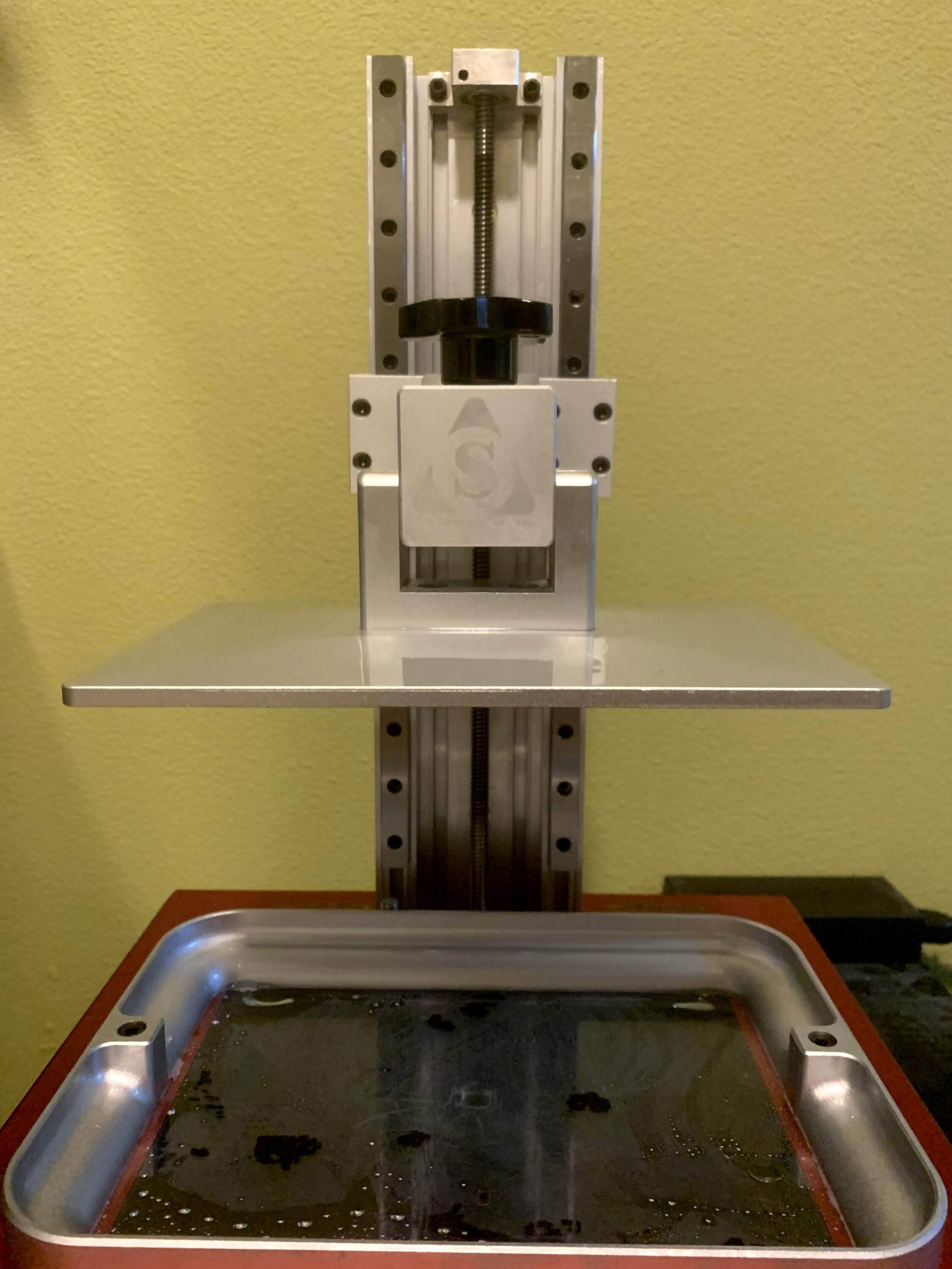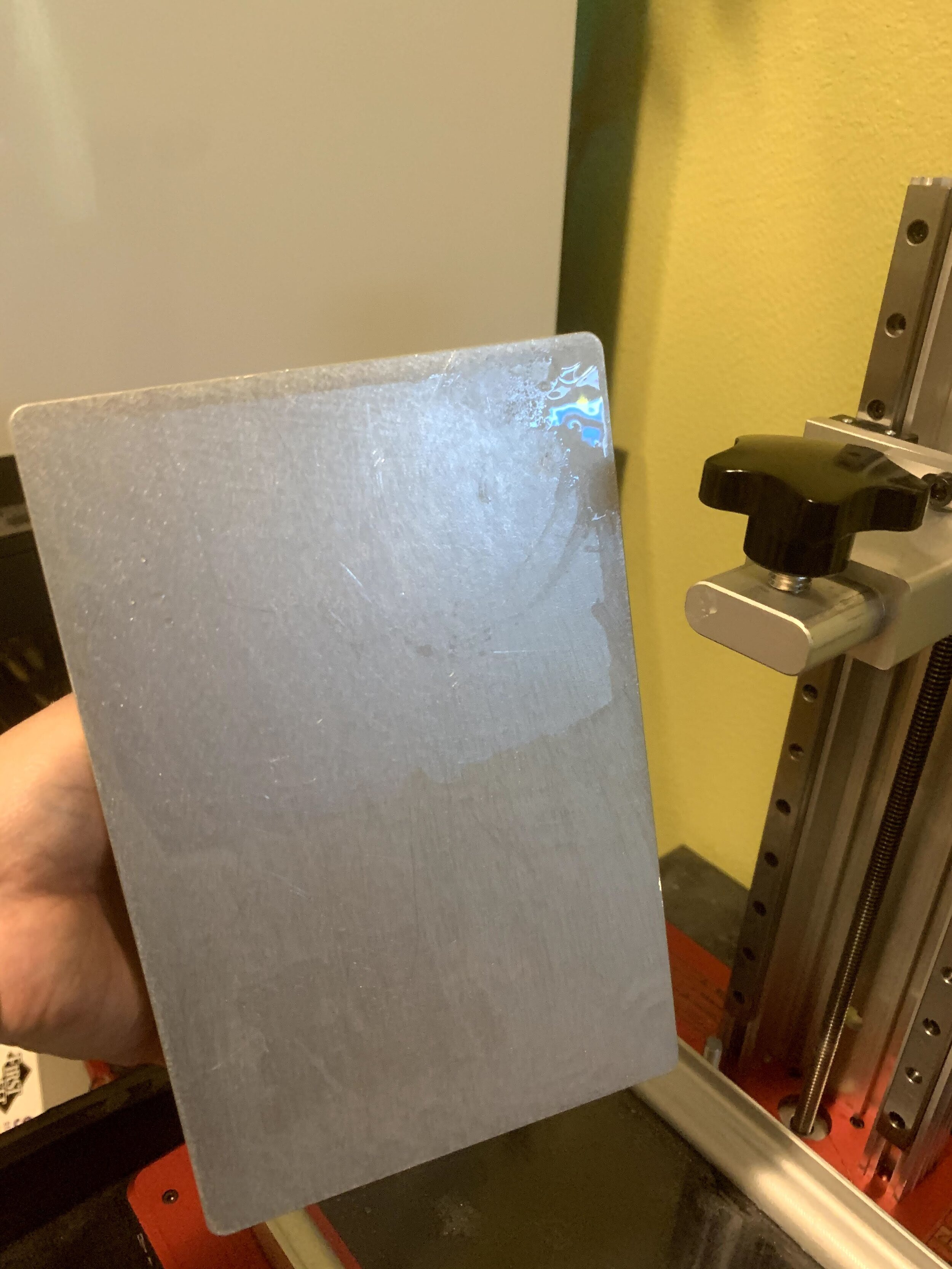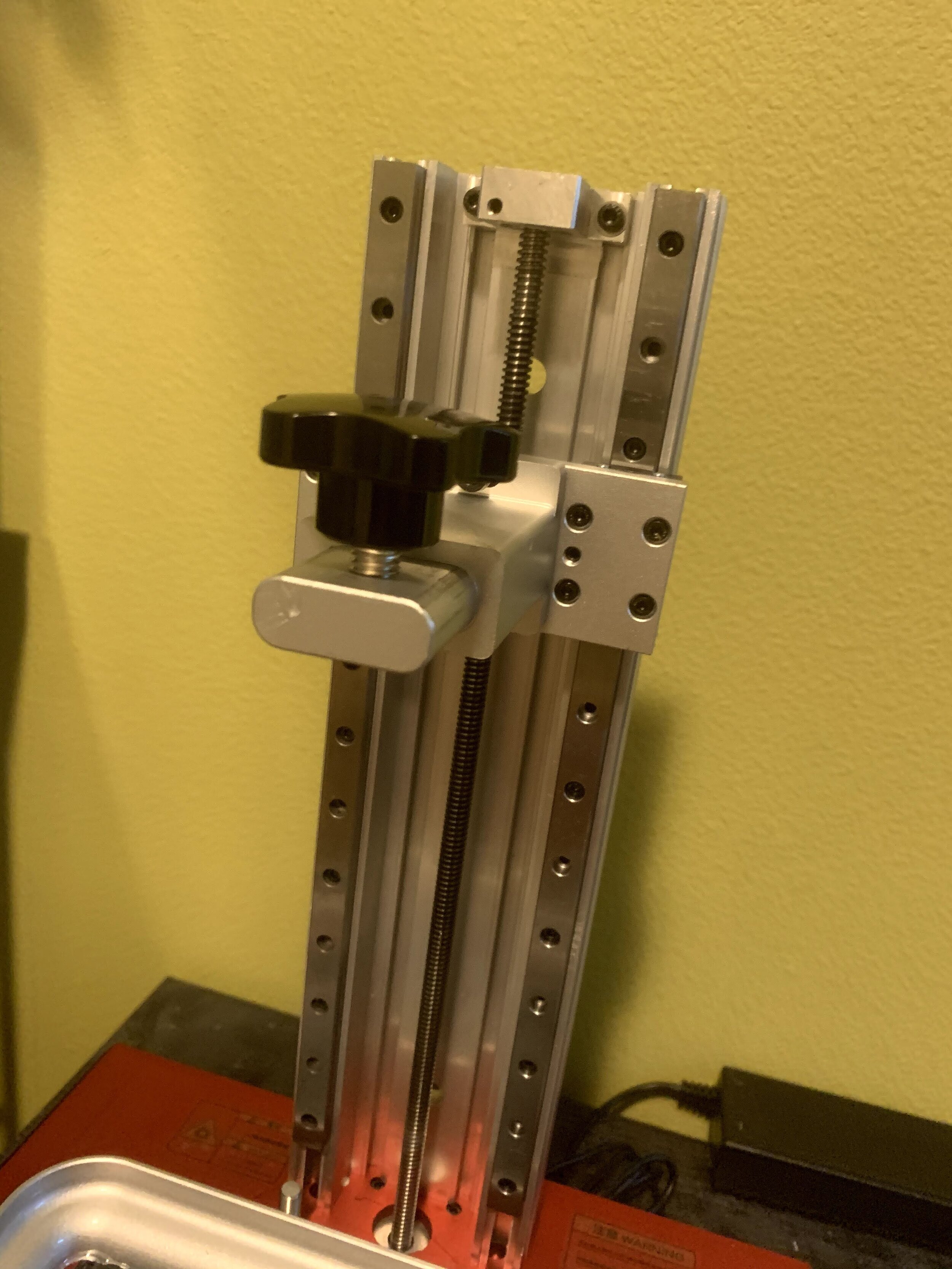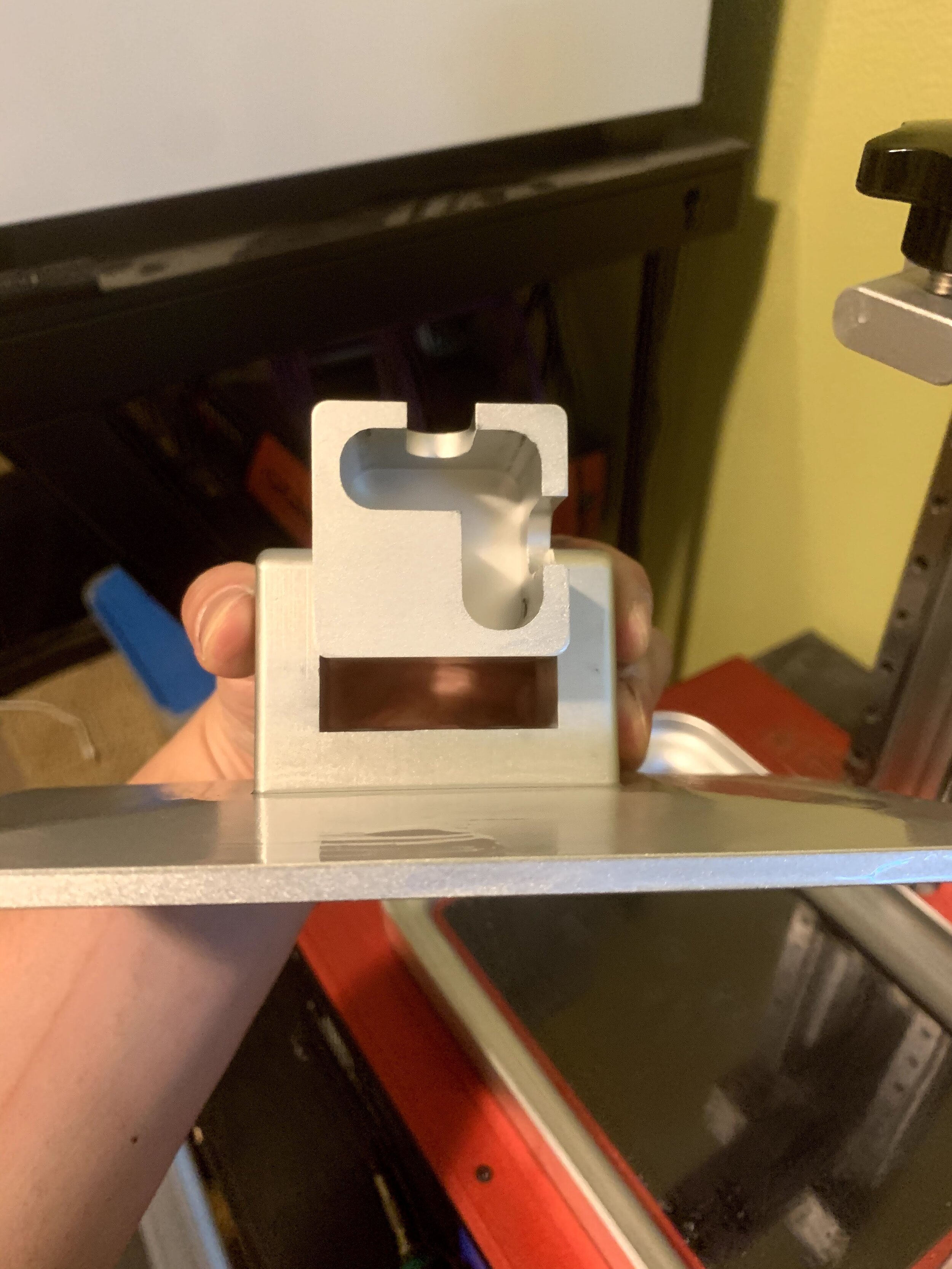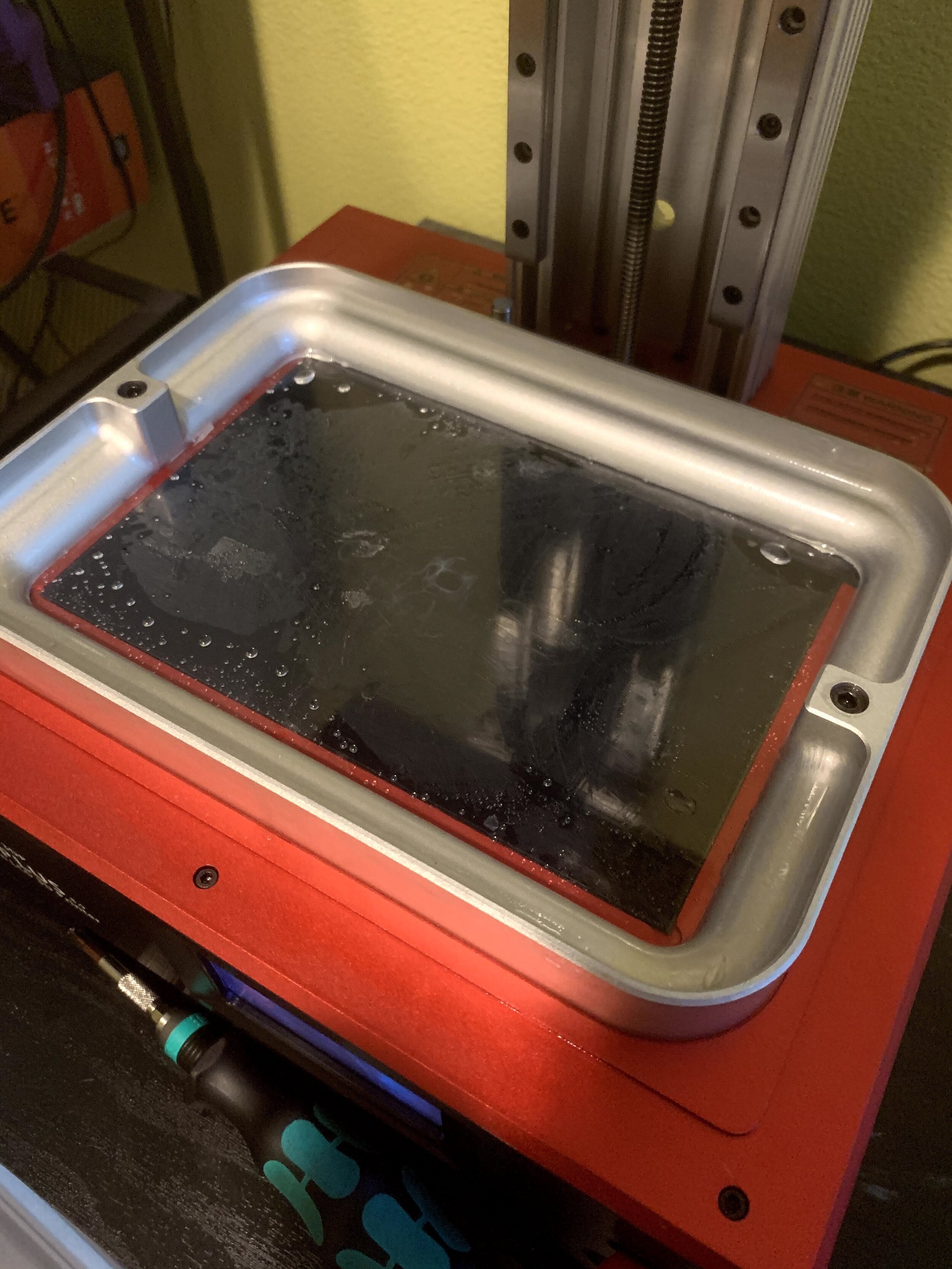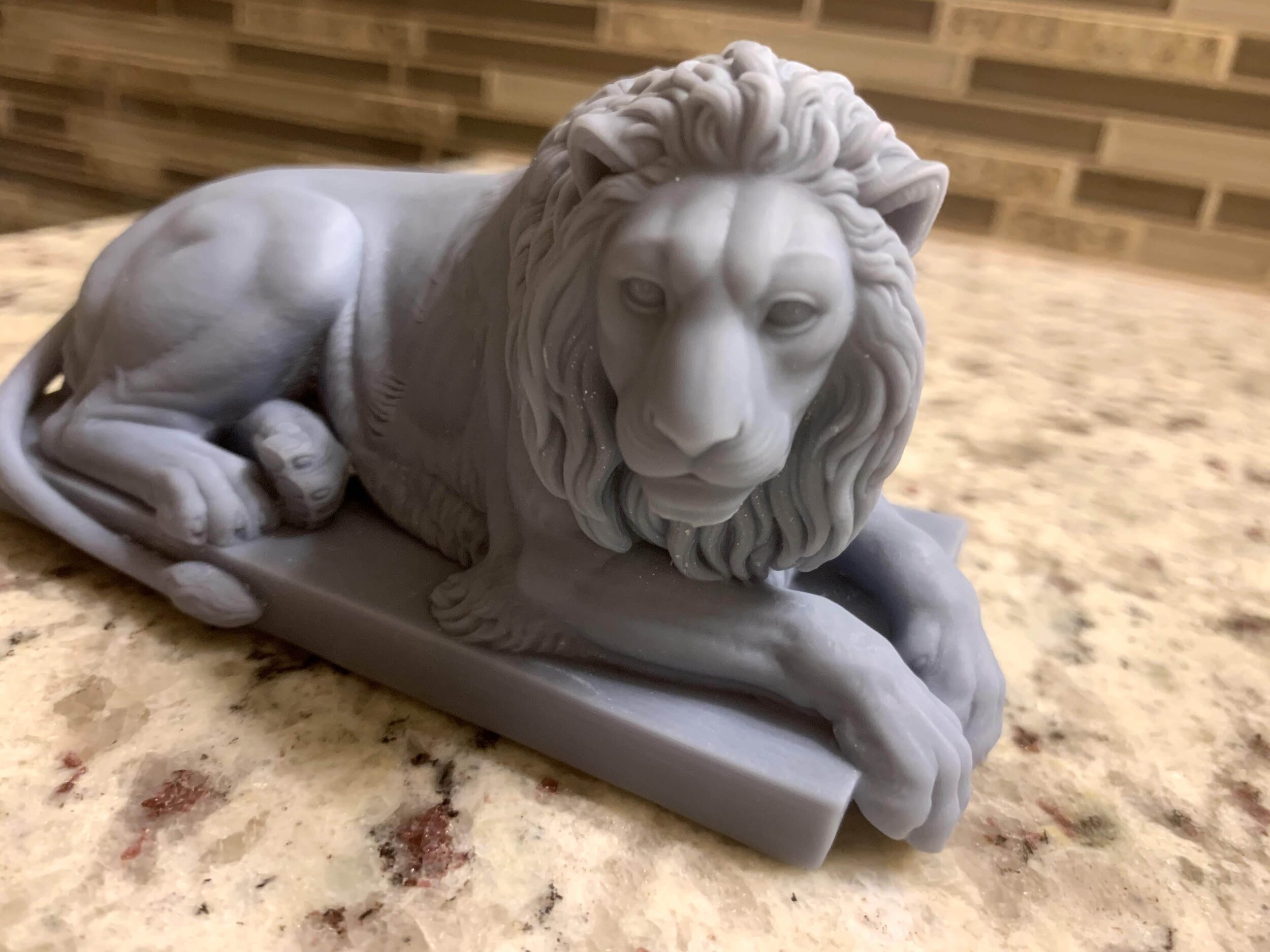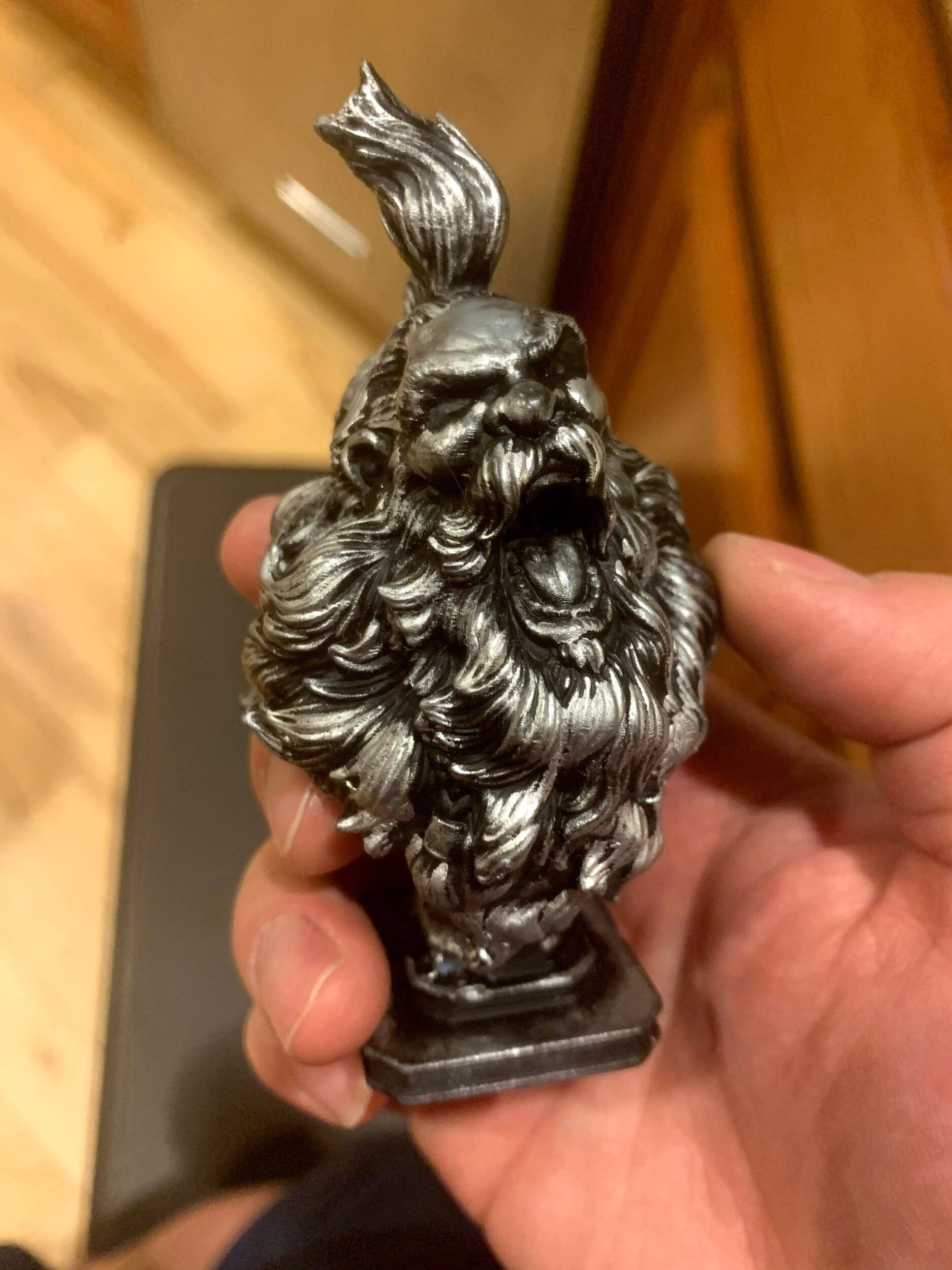Failed expectations of a sub $1000 MSLA 3D Printer
introduction
I thought that this review was going to be take a lot longer to write. I had various tests that I wanted to conduct and things I wanted to print but sadly my testing came to a short stop…
I started exploring the idea of owning an MSLA 3D printer in January after feeling like I wanted to move on from FDM printing and try something else out; along with being annoyed at the fact that the level of detail I wanted for parts was just not there when it came to FDM. I researched and dug up as much information as I could about MSLA printers and the Elegoo Mars seemed like the best thing out for the price. After looking around some more I came upon the 3D STEK X-Cube V4, a really peculiar MSLA printer with a 2K 8.9” display, a build volume of 192x120x250, dual linear rail, a vat that could hold about 300ml, and pretty solid looking construction. I was even more amazed that this could all be had for the low price of $645. I looked around and saw that Sainsmart had also released the same printer under their own name and called it the KL9, I’m not too sure if the internals are the same but the exterior looked exactly alike. The biggest difference between the KL9 and the X-Cube V4 was the fact that the KL9 was $999 and the X-Cube V4 could be had for a lot cheaper. I decided to ordered the V4 off Aliexpress during the Lunar new year and was hoping that it would be delivered by the end of February, but that was not the case. COVID-19 was just starting to run rampant and everything came to a complete halt. I did not get the printer until towards the end of March. While waiting for the printer I made a UV Curing chamber, bought an ultrasonic cleaner, a bunch of 99% isopropyl alcohol, 4 liters of resin, and a few boxes of nitrile gloves.
Shots of the printer
Delivery and first impressions
when I received the package I was super excited. The box wasn’t too heavy, it was about 30lbs and didn’t look too rough for being shipped from so far away. After opening the box and pulling everything out I discovered that the cover had a huge crack and so I contacted the seller and tried to see what could be done (More on that later). The first thing I did was an LCD test to make sure everything worked. I then leveled the build plate by loosing the 4 screws that were holding the build plate. I found slicer settings from users who had the KL9 and did one of my first prints using Sainsmart grey resin which was the “Bearded Yell” model from Thingiverse. I decided to use Prusa Slicer to generate the supports and sliced it in Chitubox which is the slicer that seems to be used by most MSLA 3D printers. The print came out pretty amazing. The quality was amazing compared to anything I’ve ever printed on my FDM printer.
Printing and Cleanup
The print took a lot longer than one done on a FDM printer and the cleanup process was probably the most involved thing. I had no idea what I was doing and didn’t have a process set up so I got resin everywhere and made a huge mess. Tons of paper towels, dripped resin, and sticky nitrile gloves later I got the print cleaned up. Snapping the supports off was pretty easy but left a bunch of pimples and craters. To clean the print I topped it in a container filled with isopropyl alcohol and threw that in the ultrasonic cleaner for a 20 minutes rinse. The print came out clean and pretty nice and clean. I then washes it in a container of clean water and dried it off with a paper towel and left it n my UV curing chamber for about 10 minutes. After it cured I spray painted it black and used some rub n’ buff on it to give it a sweet antiqued metal look.
A Few Models From The Printer
Printing and Issues
I had a lot of success with prints, never experienced too much of an issue with the prints not sticking to the build plate or anything like that. I began playing with the idea of reprinting my extruder and most of my MK3S parts with Siraya Tech Blue resin which was suppose to be a real strong resin and not as brittle as most resins on the market. I had lots of trials and errors as I tried to figure out orientation of the parts, where supports should be generated, etc. I was able to eventually get one piece of the extruder printed. The finish was amazing and even though it was not perfect I was able to sand off the imperfections really easily. The printed part started to become yellow as I cured it so I decided for my next test I was going to add some blue resin dye to help with the yellowing. I quickly ran into troubles with the printer after I had everything adjusted. For whatever reason the LCD stopped working on one side and was basically just printing giant blocks instead of the model. I believe the issue with the LCD maybe related to how the package was handled and the issue just didn’t make itself apparent until a few days later. After a few tries I gave up and contacted the store on AliExpress, the seller basically told me that I would have to pay for shipping to return the printer to them. I knew that shipping was going to cost easily over $100, I had recently sold and shipped out my old 3D printer and the box was roughly around the same dimensions. I asked the seller if they could possibly sell me a discounted LCD or if they were able to do anything about the cracked cover but I was met with silence. I then reached out to my credit card company to dispute the charge since I felt like I was not getting anywhere with the seller. At this point I’m still waiting on my credit card company and will update once the dispute is settled, but until then I’m out about $645. I was really disappointed that I didn’t get to use the printer more, it was a very different experience than FDM printing and I was not a fan of the fumes in my office or the noise but the prints just looked so good.
A block of almost 300ml of resin
Tear Down
Since I was probably never going to hear back from the seller and may not get my money back at all I decided to do a tear down so that people know what’s inside the printer. I wasn’t able to completely tear it down due to one of the screws being stripped and not having any tools to remove it. The pictures below give you a pretty good idea of what’s inside, and honestly it makes me wonder if bigger and more affordable MSLA printers are on the horizon. From what I can see with the printer somewhat disassembled, it looks like there are two boards and a third smaller board that is probably driving the UV lights. From the picture below you’ll get an idea of what I’m talking about.
The first picture with the board that says “STEK” seems to be the board that distributes power and controls a few fans and UV lights. That board is connected to the board in the second picture which drives both the LCDs, the one on the front and the 8.9” LCD that does the masking along with the stepper motor that drives the build plate. In the third picture you’ll see a USB cable, it looks like they basically ran an extension from the main board to the front of the printer. Both the main board and the power distribution boards are connected via an ethernet type cable. I’m not an expert in electronics so I didn’t do a deep dive into the microcontroller or anything like that, but after seeing how simple and bare this printer is it has me thinking that once Chinese factories get back to full production and if there is a demand for these types of printers they’ll become cheaper and cheaper as parts become more abundant. Most parts like very “off the shelf” and easily sourced. Honestly, I think the most expensive parts in this are probably the UV light array and the 8.9” LCD.
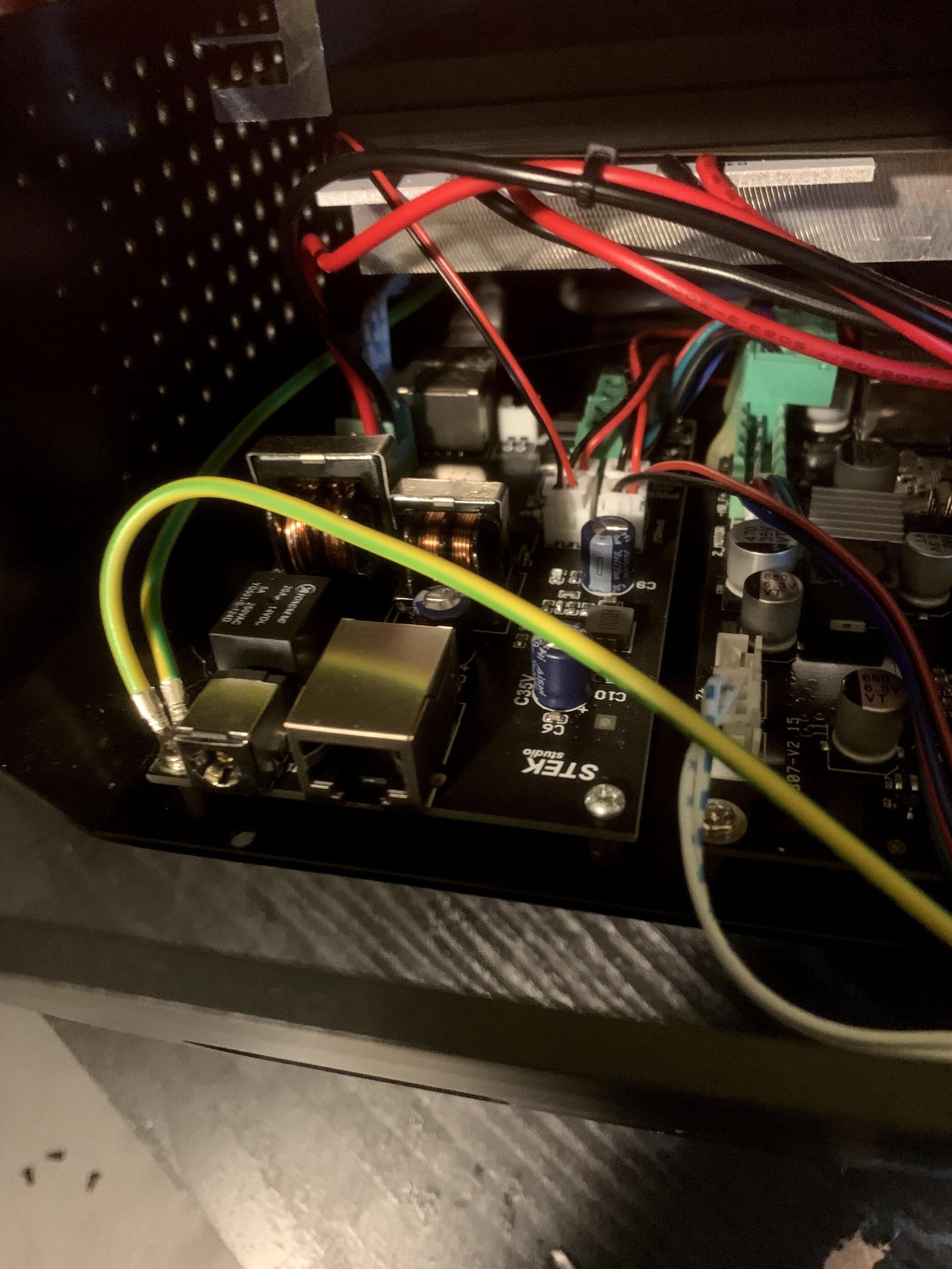
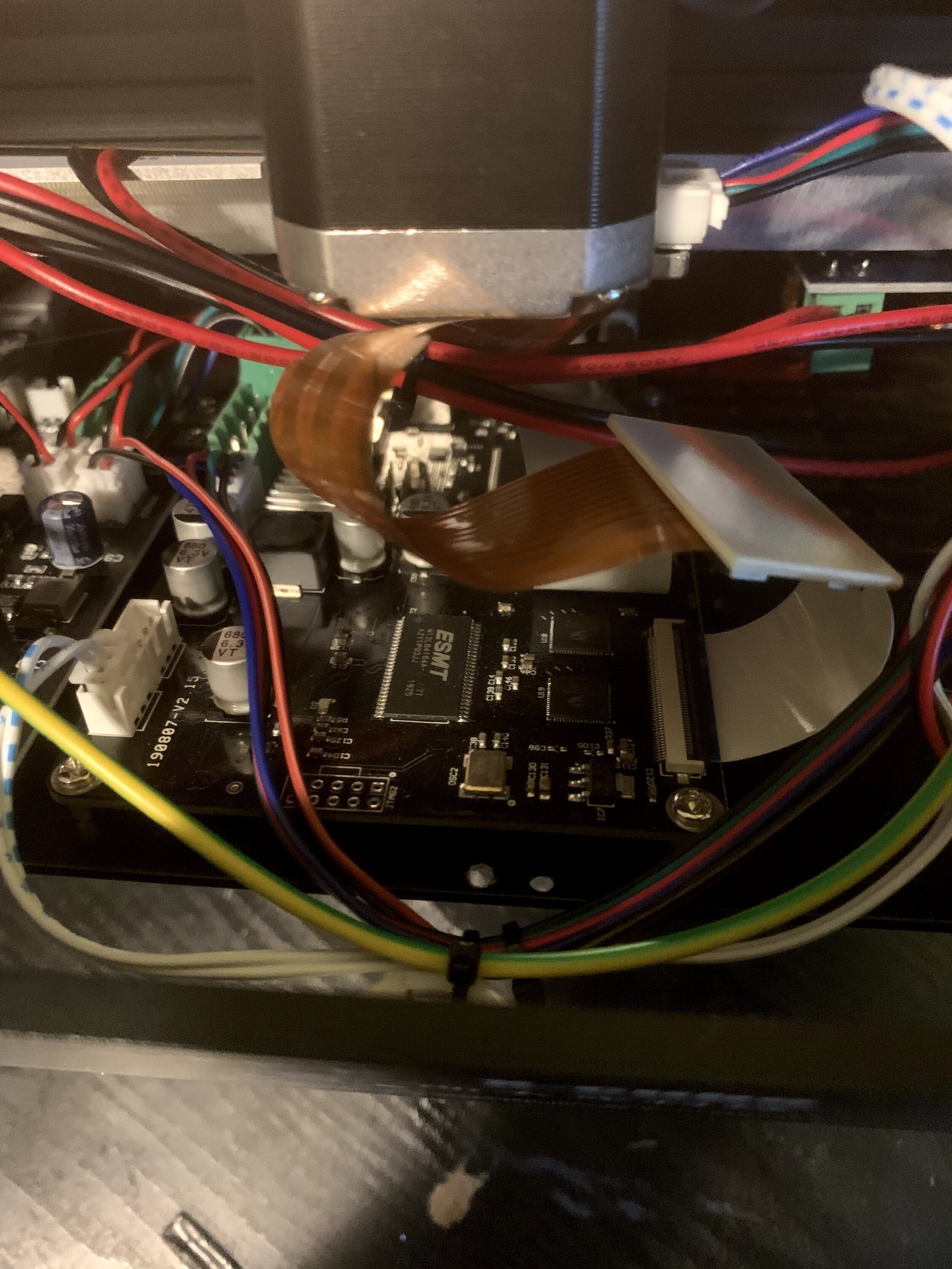

Where am I going from here?
At this point of the journey I might eventually look into picking up a new LCD and just fixing the printer, but with the uncertainty of everything right now (job, future, finances) I’m going to just box up the printer and leave it as is until I either hear something back from my credit card company or 8.9” LCDs become cheaper and more easily sourced here in the states. With the impending release of the Elegoo Saturn and other 8.9” MSLA printers, my hopes are that prices will come down even further. I am impressed by the quality and finish of MSLA printers, being someone who has worked with FDM printers for over 6 years no amount of tweaking will ever get you the same results but the trade off is more mess, more expense (LCDs are sometimes rated for only about 100 hours of use or so), longer waits, potentially harmful chemicals, noise, and the occasional complaint from people in the home about how it doesn’t smell very pleasant. One thing I have noticed about most MSLA printers is that they’re all very similar in terms of hardware with a few extra features here and there from different manufacturers, but the core components are basically the same. The 5.5” MSLA 3D printers all use the same or similar LCD, usually driven by a stepper motor on a single or dual linear rail, and either a single or array of UV lights.
Final Thoughts
As usual, I have some final thoughts that I’d like to share and hope that whoever reads this will find them helpful.
If you have never used any sort of resin based printer, be prepared for it to get everywhere
Before removing your prints from the build plate, have everything you might possibly need at the ready (paper towels, a container filled with alcohol, Simple Green, or any other cleaning solution you’ll use, a separate container with water, a clean work space, etc.)
Be prepare to wait long hours for prints to finish and cross your fingers that nothing fails during that long grueling process, it is frustrated to wait 12 hours only to realize that a support failed somewhere and the whole print is ruined
Come up with a procedure for cleaning prints and anticipate potential issues (Making sure your tools are within reach, be ready to act quickly if spills even messes happen)
Always wear PPE, regardless of how big or small the print is, take the time to keep yourself safe and minimize contact with resin and exposure to UV
Cure all tools, garbage, etc. that comes in contact with resin before disposing or putting away. One of the most dangerous things to do is to just pour resin down the drain or throw away resin that isn’t cured. It’s considered hazardous until cure, so help protect the environment by being responsible.
Resin is also very sticky and will get on all of your tools, have a separate set of tools that are used specifically for working with resin, it is so easy to contaminate other things with resin and if you unknowingly run your eye or get some on your skin and not wash it off you’re going to have a bad time
Bigger isn’t always necessarily better, from my experience with FDM printers I always thought that printers with bigger build volumes are better because I can print bigger objects or have more room for many small prints but from my experience with MSLA I’ve found that I felt pretty overwhelmed at times dealing with the huge build plate and the amount of resin that dripped everywhere. Maybe it’s just me, but I’d recommend starting with something smaller like the Elegoo Mars and learning the basics first, and making sure this is an investment you want to make before buying or attempting to work with something bigger. The Mars is often on sale for around $229, and since it is sold on Amazon, dealing with returns is a lot easier. Parts for the Elegoo Mars are also a lot cheaper. The LCD is around $25 for the Mars, I’ll have to spend around $80 for a 8.9” LCD replacement. I plan on eventually working with MSLA printers again, but right now with everything going on I’m going to stick with my FDM printer. I am sure that maybe I received a dud and it could’ve been an amazing printer, I am hopeful that big MSLA printers will become cheaper and easier to use in the near future. I can’t recommend the seller or even want to share a link to their store but if you are interested just go to Aliexpress and do a search for “SLA 3D Printers” and I’m sure you’ll find something similar from various sellers.
This was my short experience with MSLA 3D printing and I do hope that it helps give insight into what is involved and necessary to get started. It didn’t work out as well as I thought it would for me but I know that everyone’s experience is different. Don’t get into MSLA 3D printing with the same expectations as FDM printing. Cleaning prints and handling the resin is nowhere the same as opening a new spool of filament. I don’t want to discourage anyone from trying out MSLA, but I do hope this review helps give some perspective. Leave a comment below if you have any questions, note that my Amazon links are affiliated and if this or any of my other guides or reviews helped you out a donation of any amount is welcomed.

